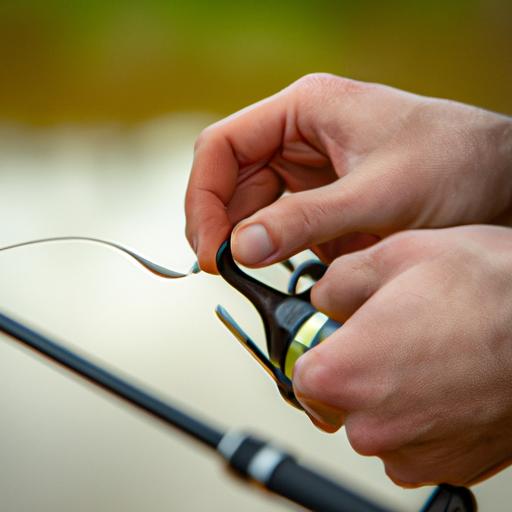Introduction
Fishing rods are more than just tools; they are an essential companion for every angler. Whether you’re a seasoned pro or a novice, selecting the right fishing rod is crucial for a successful angling experience. But here’s the burning question: how many fishing rods per person should you have in your arsenal? Let’s dive deeper into this enigma and unravel the factors that influence your rod count.
When it comes to fishing, personal preferences and experience play a pivotal role. Each angler has their own unique style, target species, and preferred angling techniques. As a result, determining the ideal number of fishing rods per person becomes a subjective matter. However, by understanding the underlying factors and considering individual fishing needs, we can find the perfect balance.
Understanding Fishing Rods
To comprehend the significance of choosing the right number of fishing rods, we must first grasp the essence of these versatile tools. Fishing rods are specialized devices designed to cast bait or lures into the water and reel in fish. They vary in length, material, and action, catering to different fishing styles like freshwater, saltwater, fly fishing, or ice fishing.
With a vast array of fishing rods available in the market, it’s essential to understand their unique features and how they align with your fishing requirements. Factors such as rod length, power, action, and material influence the rod’s performance and suitability for specific fishing scenarios. By considering these aspects, you can make an informed decision when building your fishing rod collection.
Stay tuned for the upcoming sections, where we delve into the factors that contribute to the optimal number of fishing rods per person. From fishing preferences to experience levels, we’ll explore how these variables shape your rod selection. So, let’s uncover the secrets behind finding your perfect fishing rod match!
Understanding Fishing Rods
A. Definition and Explanation of Fishing Rods
Fishing rods serve as the backbone of any angler’s equipment, enabling them to cast their line accurately and reel in their prized catch. These long, slender devices are typically composed of lightweight materials such as fiberglass or graphite, providing the necessary flexibility and strength for successful fishing endeavors.
At its core, a fishing rod consists of several key components. The grip, or handle, allows anglers to maintain a firm and comfortable hold while casting and reeling. The reel seat securely holds the fishing reel, which houses the fishing line. The guides, or eyelets, are strategically placed along the length of the rod to guide the line and prevent friction. Lastly, the rod tip, often made of a sensitive material like carbon fiber, allows anglers to detect even the slightest nibble.
B. Different Types of Fishing Rods Available in the Market
The world of fishing rods is incredibly diverse, catering to various fishing styles and environments. Understanding the different types of fishing rods available can help you identify which ones align with your specific angling pursuits:
-
Spinning Rods: These versatile rods are popular among anglers and are suitable for a wide range of fishing techniques. They feature a large reel mounted beneath the rod, allowing for smooth line release during casts.
-
Casting Rods: Designed for more precise and controlled casting, casting rods have a reel mounted atop the rod. They excel in techniques like baitcasting or flipping and pitching.
-
Fly Rods: Fly fishing enthusiasts swear by these specialized rods. Featuring a long, flexible design, fly rods allow for delicate presentations of lightweight flies on the water’s surface.
-
Surf Rods: If you enjoy fishing from the shoreline or casting into the surf, surf rods offer the length and power required to handle the challenges of coastal fishing.
C. Factors to Consider When Choosing a Fishing Rod
When selecting a fishing rod, several factors come into play:
-
Fishing Environment: Consider the type of water you’ll be fishing in, be it freshwater lakes, rivers, or saltwater bodies. Different environments call for different rod types and materials.
-
Target Species: The species you intend to catch determines the rod’s power and action requirements. Heavier rods are suitable for larger fish, while lighter rods excel in finesse fishing.
-
Fishing Techniques: Your preferred angling techniques, such as jigging, trolling, or finesse presentations, dictate the rod’s characteristics like length, power, and action.
By taking these factors into account, you can make an informed decision when choosing the ideal fishing rod for your angling adventures. So, let’s move on to the next section, where we explore the factors influencing the number of fishing rods per person.
Factors Influencing the Number of Fishing Rods per Person
When determining the ideal number of fishing rods per person, several factors come into play. These factors are crucial in ensuring that you have the right equipment to meet your angling needs. Let’s explore the key elements that influence the number of fishing rods needed to enhance your fishing experiences.
A. Fishing Preferences
-
Angling Techniques: Different fishing techniques require specific rod types. For instance, if you enjoy casting and retrieving lures, a spinning rod might be ideal. On the other hand, if you prefer the finesse of fly fishing, a fly rod would be your go-to choice. Consider your preferred angling techniques when deciding on the number of rods.
-
Target Species: The type of fish you aim to catch also impacts your rod selection. Each species may demand a different approach, such as using heavier rods for big game fishing or lighter rods for trout fishing. Assess the variety of fish you intend to pursue to determine the number of rods required.
-
Fishing Environments: Whether you fish in freshwater or saltwater bodies, different conditions call for specific rod characteristics. Saltwater fishing may require corrosion-resistant rods, while freshwater fishing may demand rods with greater sensitivity. Take into account the environments you frequent to determine your rod count.
B. Experience Level
-
Novice Anglers: Beginners can start with a single versatile rod to learn various techniques and gain experience. A medium-power spinning rod or a versatile baitcasting rod can suffice initially.
-
Intermediate Anglers: As you progress and expand your skills, you may find the need for specialized rods. Consider adding rods specific to your preferred techniques or target species to enhance your angling abilities.
-
Advanced Anglers: Seasoned anglers often possess an assortment of rods tailored to their specific fishing needs. With experience, you can fine-tune your collection to include rods optimized for different situations, increasing your chances of success on the water.
C. Frequency of Fishing Trips
The frequency with which you embark on fishing trips also influences the number of rods you should have. If you fish regularly, owning multiple rods with different specifications can provide versatility and adaptability to varying fishing conditions. Conversely, infrequent anglers may opt for a smaller collection that suits their occasional outings.
By considering your fishing preferences, experience level, and the frequency of your fishing trips, you can narrow down the number of fishing rods needed to optimize your angling endeavors. Stay tuned as we move forward to explore the optimal rod count per person based on these factors.
Optimal Number of Fishing Rods per Person
A. General Recommendations Based on Fishing Preferences and Experience Level
Determining the optimal number of fishing rods per person can be a daunting task, but fear not! By understanding your fishing preferences and experience level, you can make informed decisions that enhance your angling adventures.
-
Fishing Preferences:
When it comes to fishing, anglers have diverse preferences. If you enjoy exploring various angling techniques like baitcasting, spinning, or fly fishing, it’s beneficial to have a versatile rod collection. Aim for at least two to three fishing rods that cater to different techniques, ensuring you’re prepared for any fishing situation.Furthermore, consider the target species you frequently pursue. If you enjoy pursuing a wide range of fish species, having specialized rods for different types of fishing (e.g., freshwater, saltwater) can enhance your success rate. This allows you to optimize your gear for specific environments and species, improving your chances of landing that trophy catch.
-
Experience Level:
Novice anglers typically benefit from starting with a single all-purpose fishing rod. This helps them develop their skills and gain a better understanding of their fishing preferences. As they progress and gain experience, expanding their rod collection becomes advantageous. Intermediate and advanced anglers often prefer having a diverse set of fishing rods, allowing them to fine-tune their approach to different fishing scenarios.
B. Example Scenarios with Suggested Rod Numbers
Let’s explore a few example scenarios to provide you with a clearer picture of the optimal number of fishing rods per person based on fishing preferences and experience level:
-
Scenario 1: Novice Angler:
For beginners, starting with a single all-purpose fishing rod is ideal. This versatile rod can handle a variety of fishing techniques and target species. As you gain experience and discover your preferred fishing style, gradually expanding your collection to include specialized rods can enhance your angling experience. Aim for a total of two to three rods, covering different techniques or environments. -
Scenario 2: Intermediate Angler:
Intermediate anglers typically have a solid understanding of their fishing preferences. In this case, owning three to five fishing rods is recommended. This allows you to have dedicated rods for specific techniques or environments, such as a baitcasting rod for precision casting and a spinning rod for versatility. Having a diverse collection ensures you’re well-equipped for various fishing scenarios. -
Scenario 3: Advanced Angler:
Seasoned anglers who frequently embark on fishing expeditions often prefer a wide range of specialized fishing rods. Aim for six or more rods to cover a comprehensive array of techniques, target species, and environments. This level of versatility allows you to adapt to any fishing situation, maximizing your chances of success.
Remember, these are general recommendations, and the optimal number of fishing rods per person ultimately depends on your personal preferences, fishing goals, and budget. It’s crucial to find the right balance that caters to your specific needs, ensuring an enjoyable and fruitful fishing experience. So, let’s move on to the next section and explore how to manage your budget and storage space while building your rod collection.
Managing Budget and Storage Space
A. Considerations for budget-conscious anglers
When it comes to building your fishing rod collection, budget constraints can play a significant role. However, fret not, as there are ways to optimize your investment without breaking the bank. Here are a few considerations for budget-conscious anglers:
-
Research and Compare: Take the time to research different fishing rod brands, models, and prices. Compare prices from various retailers and online platforms to find the best deals. Look for sales, discounts, or even second-hand options to stretch your budget further.
-
Prioritize Quality: While budget-friendly options may be tempting, don’t compromise on quality. Investing in a durable and reliable fishing rod will save you money in the long run by avoiding frequent replacements or repairs.
-
Multifunctional Rods: Opt for versatile fishing rods that can handle a variety of fishing techniques and target species. This way, you can maximize the usage of a single rod instead of investing in multiple specialized rods.
-
Consider Used Equipment: Buying pre-owned fishing rods from reputable sources can be a cost-effective alternative. Just ensure to thoroughly inspect the rod for any damages or defects before making a purchase.
B. Tips for optimizing storage space for multiple fishing rods
As your fishing rod collection grows, organizing and storing them efficiently becomes crucial. Here are some tips to optimize your storage space:
-
Vertical Storage: Utilize vertical space by investing in rod racks or wall-mounted holders. These storage solutions keep your rods secure and easily accessible while minimizing floor space usage.
-
Rod Tubes or Cases: Protect your fishing rods from potential damage by storing them in rod tubes or cases. These protective covers not only safeguard your rods but also make it easier to stack or store them in tight spaces.
-
Customized Storage Solutions: Consider building or purchasing customized storage systems tailored to your specific needs. Wall-mounted pegboards, overhead rod holders, or even DIY PVC rod holders can be practical options to maximize space utilization.
-
Compact and Portable Rods: If storage space is a premium, consider investing in collapsible or telescopic fishing rods. These compact and portable options are easy to store in smaller spaces like backpacks or travel cases.
By implementing these budget-friendly and space-saving strategies, you can effectively manage your fishing rod collection without compromising on quality or convenience. So, let’s make the most out of your angling adventures while optimizing both your budget and storage space!
Conclusion
Finding the ideal number of fishing rods per person is a quest that requires careful consideration of various factors. By understanding your fishing preferences, experience level, and the frequency of your fishing trips, you can determine the optimal rod count that suits your needs.
Remember, there is no one-size-fits-all answer to this question. Fishing is a unique and personal experience, and what works for one angler may not work for another. It’s crucial to experiment, adapt, and fine-tune your rod collection based on your evolving fishing style and preferences.
As you embark on your fishing adventures, keep in mind that the number of fishing rods you possess is just one aspect of the equation. Equally important is the quality of the rods you own. Investing in well-crafted, durable fishing rods will enhance your angling experience and ensure that you’re well-prepared for any fishing scenario that comes your way.
In conclusion, the question of how many fishing rods per person is subjective and dependent on individual factors. Consider your fishing style, target species, and experience level, and let these elements guide you in building the perfect collection of fishing rods. So, grab your rods, cast your lines, and immerse yourself in the wonders of fishing with the confidence that you have the right tools by your side.
Happy fishing!




